Take this unusual summer and turn it into a fun and enlightening family adventure into the outdoors.
We’re entering a summer like no other.
Orange County businesses and venues have started re-opening, but things are still in a state of flux. Kids are done with the school year and families are likely feeling the pull of some kind of adventure that doesn’t involve staying home.
Though there’s still a pandemic looming and no official risk-free zone outside the home, health experts have generally pointed to the great outdoors for getting in some exercise, sun, fresh air and general de-stressing during shelter-in-place orders. And many outdoor venues, wilderness parks and other open spaces are now open with safety protocols put in place.
While the situation is far from what most of us anticipated this summer, it also presents an opportunity for parents to spend time with their kids for an educational, entertaining and enlightening experience outdoors.
“Recreating outdoors, especially with family, creates impactful moments in a child’s life that can stay with them through their lifetime,” said OC Parks Historic Resource Specialist Kelley Brugmann. “Family picnics on the lawn, storytelling on a stroll, birdwatching on the edge of a lake, and searching for clues animals left behind on the trails are just the start to experiences nature can offer to your family. Nature provides a therapeutic effect that can recharge the mind, body and spirit.”
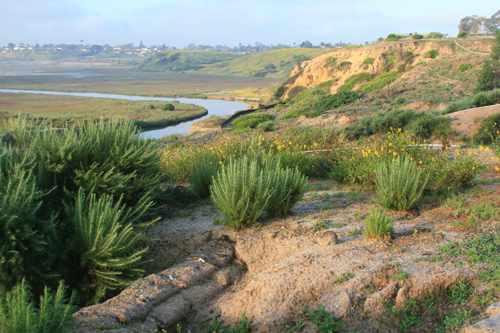
OC Parks Public Information Officer Marisa O’Neil said that all county beaches and regional and wilderness parks are open — though some amenities remain closed, including playgrounds and picnic shelters. Trails are open as usual and a limited number of individual campsites — no group camping — at O’Neill Regional Park and Caspers Wilderness Park.
“We ask that all park visitors follow state and county health orders and observe physical distancing,” said O’Neil.
She also recommends checking the website for updates since things may change, as well as to make campsite reservations.
“You and your family can explore the vast trails throughout OC Parks, discovering hidden worlds below an oak tree or relaxing in an open field watching the clouds,” said Brugmann. “Structured recreation as well as free play are both needed for a young child’s development to make connections around them, and encouraging their curiosity and imagination. Each park provides its own untapped experiences for our children.”
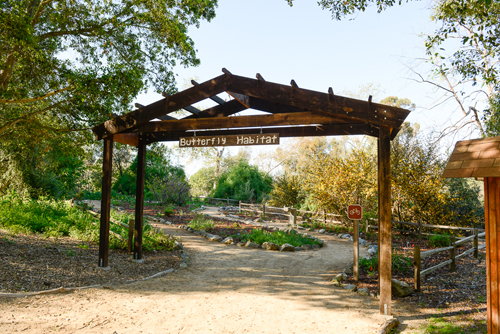
Park Adventures
Brugmann offered up some ideas and inspiration for parents wanting to create a special outdoor adventure for their children.
Parents of toddlers (ages 2 to 6) can try the “100 Inch Hike.”
“Measure 100 inches in one continuous stretch and slowly walk along to discover what details lay below our feet,” she said.
You can also play “What’s Different, What’s the Same” and “search for items found in nature that have similarities and differences to compare such as shape, color, texture, size and maybe even smell.”
Kids can also make leaf rubbings by selecting fresh, fallen leaves from under various trees to compare while creating different art designs using paper and crayons.
“Be sure to only select leaves you can identify, avoiding poison oak,” said Brugmann.
As for the outdoor trails best suited to these ages, Brugmann recommends Mary’s Trail at Laguna Coast Wilderness Park, Baby Beach at Dana Point Harbor, the butterfly garden at Mason Regional Park and along the lakes at Laguna Niguel Regional Park.
For young children ages 6 to 10, try “Alphabet in Nature.”
“Search for natural items that seem to make certain shapes as letters from the alphabet,” Brugmann said. “A bent tree branch making the letter B and overlapping branches to make a W.”
“Nature Bingo” requires a little prep work.
“Prepare a Bingo card prior to going to the parks,” she said. “Some suggestions include: finding an oval rock, spotting a blue bird, identifying an animal track, hearing a squirrel bark, finding fresh animal scat (don’t touch!).”
Families can also visit the storywalk at O’Neill Regional Park and follow along the Mesa Trail, which offers a new nature story every two months for readers to enjoy. They can visit Heritage Hill Historical Park and “dive back into the 1800s when cattle roamed the foothills and citrus filled the air. Follow along the timeline panels in the park as you immerse yourself in the history of old El Toro. Buildings currently closed, but the grounds are open.”
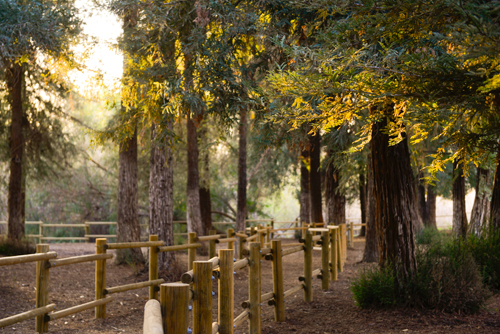
Brugmann recommends Redwood Grove at Carbon Canyon Regional Park, Creek Trail at Aliso and Wood Canyons Wilderness Park, Camp Sycamore at Mile Square Regional Park and around the bay at Upper Newport Bay as good outdoor trails for these ages.
For tweens (ages 10 to 14), she recommends some old-fashioned bird watching.
“Travel from mountains to sea by car as you search for the plethora of birds found in Orange County,” she said. “From the Oak Titmouse to the Great Blue Heron, explore OC Parks’ wilderness parks for the mountain birds then hop back in your car and head down to the coastal beaches to search for our shore birds.”
Animal tracking is another fun way to engage your tween.
“Each animal leaves behind a different track that tells a story for us to read,” Brugmann said. “Look closely at the tracks to see if you can tell if the animal was slowly stalking prey, running from a predator or meandering along the trail.”
Drawing in nature is another fun one for the family.
“Bring your sketch pad and take note of the nature around you,” she said. “Sketch the vista on top of a hill or settle under a tree to draw the details of one of its leaves.”
And don’t let the creativity stop there. Encourage some creative writing.
“Use your words to paint a picture around you,” she said. “Pose a poem, tell a story or flow with a haiku.”
For families with tweens, she recommends East Ridge Trail at Caspers Wilderness Park, Roadrunner Loop at Irvine Regional Park and Peralta Hills Trail at Santiago Oaks Regional Park.
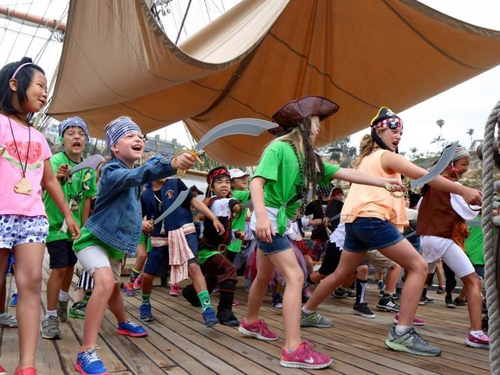
Outdoor Venues
Though Dana Point’s Ocean Institute is closed, Wendy Marshall, the president of Education and Operations, said they are welcoming families to their marine life cruises and sails on the Spirit of Dana Point. They will also offer summer camp programs for kids.
“These experiences bring families together and connects them with the great outdoors in an inspiring way,” she said.
She said the outdoors give kids a chance to learn from nature.
“Parents have truly become the teacher over the last few months,” she said. “Outdoor adventures with our children take the pressure off and allow nature to be the teacher. It is a great opportunity for parents to ask simple, open-ended questions that enable them to see how their children see the world.”
She said it can be simple prompts like: “What surprised you about…? Why do you think…? What catches your eye…?”
“If you have limited time and find your outdoor adventures limited to the daily walk around the block with the dog, there is still a great opportunity to have fun and sharpen those observation skills,” she said. “What is different today than yesterday? How many people, bikes, dogs, blue cars, etc., do you think we will see? The world is a classroom and this is your time to enjoy seeing the world through your child’s eyes.”
She said to never underestimate the power of a few minutes in nature.
“A sunset or quick glimpse of the moon can be a refreshing and inspiring moment that turns into a rich conversation — or even a tradition,” she said.
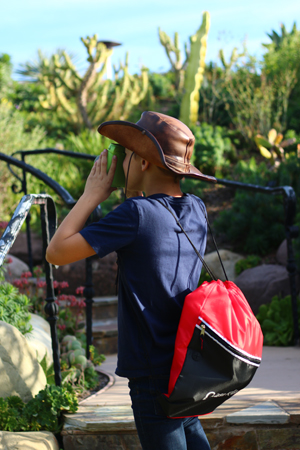
Casa Romantica Cultural Center and Gardens in San Clemente is now officially open, with plenty of the outdoors for families to experience.
“Our gardens are incredibly inspiring on their own,” said Program Director Kylie Travis.
Parents can download a number of activities from the website that they can go through completely or in part prior to heading to the Casa Romantica. For example, there’s an activity that goes through the process of creating your own arts program. It can be adapted for any age and encourages imagination, critical thinking and hands-on creative work.

Sherman Library & Gardens in Corona del Mar is also open to offer some nature appreciation to families.
“Since re-opening on May 11, we’ve observed people, and in particular families with young children, yearning to get outside into nature,” said Event & Venue Coordinator Beverly Morgan. “Our little oasis in the middle of Newport Beach provides a much needed nature break families are desiring right now.”
Sherman Gardens re-opened in May with admission tickets available on its website for designated dates and times to help ensure safe distancing and allow for proper sanitation.
“We have a special summer art installation that is on display throughout the gardens called ‘Sculptura Botanica’ — a celebration of plants through ceramic sculpture, created by artist Dustin Gimbel. His carnivorous plant sculpture is especially fun and whimsical. Kids will enjoy it.”
While the docent-led children’s tours are temporarily postponed, families can participate in a self-guided cell phone tour.
“Sherman Gardens is an inspiring horticultural oasis and nationally renowned botanical garden,” Morgan said. “The Gardens’ collections include over 100 species of palms from around the world, an artistic succulent garden, a lush tropical conservatory featuring a koi pond, carnivorous plants and an extensive orchid collection and a tea garden with numerous hanging baskets of fuchsia and begonias.”
She said that visitors can explore the gardens along wide brick walkways winding past bubbling tile fountains and flowerbeds bursting with color, texture and fragrance.
“Nobody told the plants and flowers about a pandemic, they’re blooming like crazy,” she said. “Kids are especially fond of our turtles and koi pond in the Tropical Conservatory, as well as the fountains.”
They also have a resident garden cat named Julius Caesar.
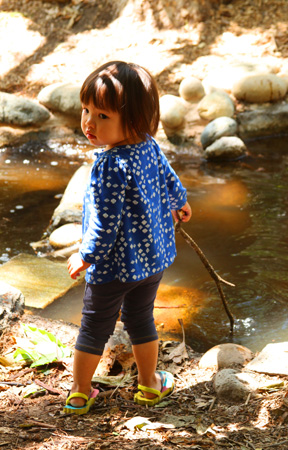
Just Go Outside
If there’s anyone that knows about teaching kids in the outdoors, it’s Lori Whalen, assistant director of the Environmental Nature Center in Newport Beach.
They are currently closed to the public during their Nature Camps through Aug. 21 and possibly longer.
“I would recommend doing all of the outdoor things that families would normally enjoy, just taking the precautions to be safe and considerate of others,” said Whalen. “If another family is passing you on the trail, put your mask on while they pass. Always call ahead because bathrooms might be closed and you’ll want to be prepared for that possibility — ‘go’ before you leave and be ready to ‘leave no trace’ with a baggie with TP. … So hit the beach, visit the tidepools, go for a hike, spend the weekend camping — just do your research and plan ahead. Make reservations when camping so you’re not disappointed.”
She said she is a firm believer in being a mentor to your kids while spending time in nature.

“Encourage their curiosity, and listen to their questions and comments and stay engaged with them,” she said. “Answer their questions to the best of your ability, but always admit when you do not know something and look it up if you have Internet access. If not, jot it down and look it up together later. If your pack isn’t too heavy already it’s fun to bring field guides to try and identify things that your child is interested in — plants, bugs, birds, tracks.”
Also, put away your phone.
“Take a few pictures, but don’t let your outdoor outing become about what you will post on social media later,” she said. “Be present with your family. Model the behavior you want to see in your children.”
She said to let nature be the teacher and entertainer.
“Remember to spend some time in silence observing the sights, sounds, scents and even the feel of the breeze on your skin,” she said. “I like to do this with groups I take hiking — ‘Let’s all be absolutely quiet for just one minute’ — and then see how everyone felt, or what they observed. It’s magical. I’ve always had good results with that super easy activity.”
If you want to get really creative, she recommends showing your family the art of British sculptor, photographer and environmentalist Andy Goldsworthy and then challenging them to create their own masterpiece the next time you go camping or pause for a long break along the trail.
“Just be sure they only use materials they find on the ground, not taken from living things,” she said. “Take a photo of their art and send it to grandparents! A super easy leave-no-trace activity.”
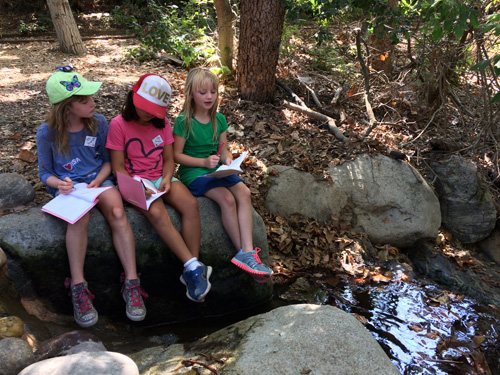
Reading is also a great nature-centric activity.
“I love to read and I think it’s important for kids to discover a love for reading,” she said. “It’s a challenge to get kids to read with the temptations of phones, tablets and TVs all around, but when you’re camping, be sure to bring your book, and encourage the kids to bring theirs — or bring some you think they might want to read. Model the behavior by reading quietly in the shade of a tree, and express your contentment to them.”
By Jessica Peralta

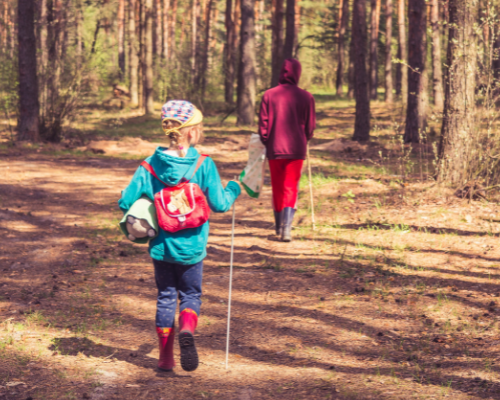








Leave a Reply